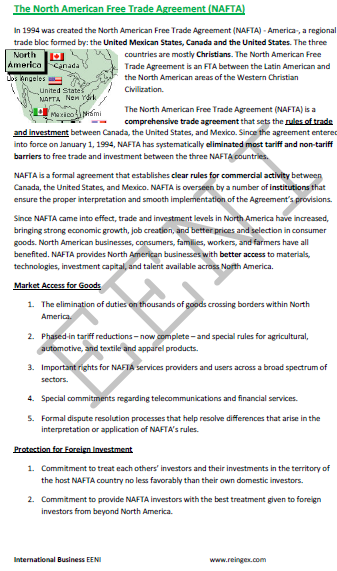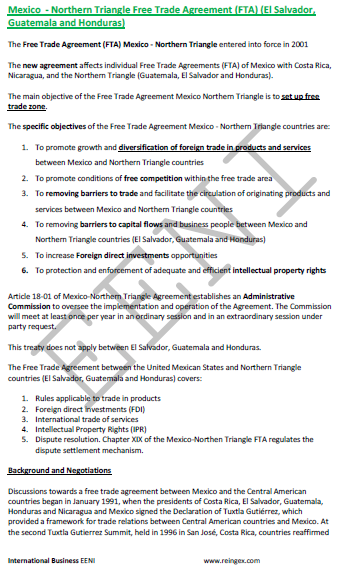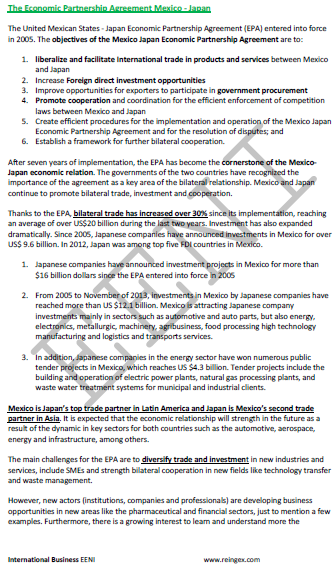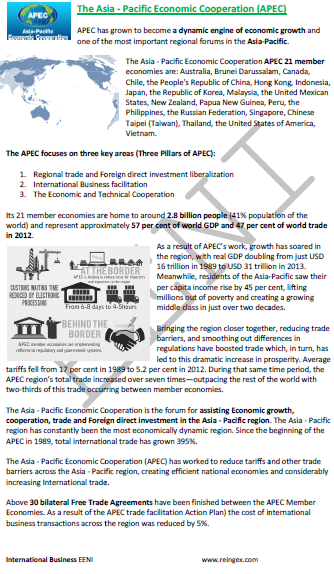Adaptation Mexican Students (Bachelor, Trade)
Adaptation to Mexican Students (Bachelor of Science in International Trade, e-learning, fourth semester, second year)
| Bachelor of Science in International Trade |

Syllabus of the Program: Mexican Foreign Trade and Economy
- Introduction to Mexico
- Mexican Economy
- Mexican Foreign Trade
- Foreign Investment in Mexico
- Trade Agreements of Mexico
Objectives:
- To analyze the Mexican Economy and Global Trade
- To identify the main trade partners of Mexico
- To know the Mexican Free Trade Agreements
Syllabus of the Subject - United States-Mexico-Canada Agreement (USMCA/NAFTA 2.0).
- Introduction to the U.S.-Mexico-Canada Agreement (USMCA/NAFTA 2.0)
- Institutions of the U.S.-Mexico-Canada Agreement
- USMCA Free Trade Commission
- Economic impact of the U.S.MCA/NAFTA 2.0
- Economic profile of Canada, the U.S. and Mexico
- USMCA Dispute Settlement
- USMCA Rules of Origin
Objectives:
- To understand the objectives and institutions of the U.S.MCA/NAFTA 2.0
- To evaluate the benefits and economic impact for the member countries of the U.S.-Mexico-Canada Agreement
- To analyze the Economic Integration process and the foreign trade between Canada, the U.S. and Mexico
- To understand the U.S.MCA/NAFTA 2.0 Rules of Origin
- To know the dispute settlement mechanism
Syllabus of the Subject - Pacific Alliance
- Introduction to the Pacific Alliance
- Strategic importance of the Pacific Alliance
- Foreign trade and integration in the region of the Pacific Alliance (Chile, Colombia, Mexico, Peru)
- Services and Capitals Liberalization
- Integrated Latin American Market
Objectives:
- To understand the objectives and the strategic importance of the Pacific Alliance
- To evaluate the benefits for the member countries of the Pacific Alliance
- To understand the concept of Integrated Latin American Market
- To analyze the economic and trade integration process between the member countries
Syllabus of the Subject: Asia-Pacific Economic Cooperation (APEC).
- Introduction to the APEC
- Structure of the APEC. The Bogor Goals. The Osaka Action Agenda
- Foreign Trade Liberalization and investments
- Trade facilitation
- Economic and technical cooperation
- Achievements and benefits of the APEC
- Committee on Foreign Trade and Investment of the Asia-Pacific Economic Cooperation
- Economy, Foreign Trade and investments in the APEC region
- Free-Trade Area of the Asia-Pacific (FTAAP)
- Trade Agreements related to the APEC
Objectives:
- To understand the Bogor Objectives and the functions of the Asia-Pacific Economic Cooperation
- To evaluate the benefits for the member countries of the APEC as well as the areas of cooperation
- To know the role of the Committee on Trade and Investment of the Asia-Pacific Economic Cooperation
- To analyze the Economic Integration process and the foreign trade between the member countries of the APEC (the free-trade area of Asia and the Pacific)
- To understand the Trade Liberalization and Investment Facilitation between the countries of the Asia-Pacific Economic Cooperation
- To explore free trade agreements between the countries of the Asia-Pacific Economic Cooperation
The Pacific Economic Cooperation Council (PECC).
- Introduction to the Pacific Economic Cooperation Council (PECC)
- Services Group: Foreign Trade and investments
- Report on the state of the region
- Index of the economic integration in the region Asia-Pacific
- Pacific Economic Cooperation Council and the free-trade area of the Asia-Pacific
Syllabus of the Subject - Association of Caribbean States (ACS).
- Introduction to the Association of Caribbean States
- Functions and organization of the ACS
- Member states of the Association of Caribbean States
- Trends of the Caribbean Foreign Trade
- Trade Policy and the integration agreements of the Caribbean Countries
- The Caribbean Expanded Economic Space
Objectives:
- To understand the objectives and functions of the Association of Caribbean States
- To evaluate the advantages for the member countries of the ACS
- To analyze the Economic Integration process between the member states of the Association of Caribbean States
- To understand the concept of the Caribbean Expanded Economic Space
Syllabus of the Subject - Mesoamerica Project.
- Introduction to the Mesoamerica Project (ex Puebla-Panama Plan): Belize, Colombia, Costa Rica, El Salvador, Guatemala, Honduras, Mexico, Nicaragua, Panama
- Mesoamerican countries Mesoamerican
- Network of the Mesoamerican Highways
- Telecommunications in the Mesoamerican region
Objectives:
- To understand the objectives of the Mesoamerica Project
- To analyze the Regional Economic Integration between the member countries of the Mesoamerica Project
- To know the Program of the Network of the Mesoamerican Highways

Mexican Regional institutions and Trade Agreements:
- The U.S.-Mexico-Canada Agreement - The U.S., Canada and Mexico- (USMCA/NAFTA 2.0)
- APEC
- Pacific Alliance
- Trans-Pacific Agreement
- Latin American Integration Association (ALADI/LAIA)
- Association of Caribbean States (ACS)
- SELA
- Mesoamerica Project
- PECC
- Mexico-EU Agreement
- Economic Complementation Agreement Mexico-Ecuador
- Trade Agreements with Colombia, Costa Rica, Nicaragua, Israel, the Northern Triangle (El Salvador, Guatemala, Honduras), EFTA, Uruguay, Japan, Chile, the EU, Ecuador, Colombia, Costa Rica, Nicaragua, Israel, Chile, Andean Community, MERCOSUR, Peru
Mexico-Northern Triangle (El Salvador, Guatemala and Honduras) Free Trade Agreement.
- Introduction to the Mexico-Northern Triangle FTA
- Certificate of origin
- Criteria for the preferential treatment
- Regional value content
Mexico-Costa Rica Free Trade Agreement.
- Introduction to the Costa Rica-Mexico FTA
- Rules of origin
- Foreign Trade Mexico-Costa Rica
- Investment flows between Costa Rica and Mexico
Mexico-Nicaragua Free Trade Agreement.
- Introduction to the Nicaragua-Mexico FTA
- Certification of origin
- Regional value content
- Foreign Trade Mexico-Nicaragua
- Investment flows between Mexico and Nicaragua
Mexico-Colombia Free Trade Agreement.
- Introduction to the Free Trade Agreement between Mexico and Colombia
- Protocol amending the Colombia-Mexico Agreement
- Advantages of the agreement
- Foreign Trade Mexico-Colombia
Free Trade Agreement between Mexico and Uruguay (ACE 60).
- Introduction to the Mexico-Uruguay FTA
- Benefits of the agreement
- Foreign Trade Uruguay-Mexico
Mexico-Chile Free Trade Agreement.
- Introduction to the Chile-Mexico FTA
- Foreign Trade Mexico-Chile
- Investment flows between Chile and Mexico
Mexico-MERCOSUR Economic Complementation Agreement.
- Introduction to the Economic Complementation Agreement between Mexico and the MERCOSUR (ACE 54)
- MERCOSUR-Mexico Agreement (automotive sector ACE-55)
- Foreign Trade MERCOSUR-Mexico
Mexico-Andean Community Agreements:
- Mexico as an observer member of the Andean Community
- Foreign Trade in Goods between the Andean Community and Mexico
- Agreement between Mexico and the Andean Community
- Partial Agreements between Mexico and the countries of the Andean Community
Free Trade Agreement between Mexico and the EU.
- Introduction to the Mexico-EU FTA
- Mexico-EU Economic Association Agreement, Coordination Policy and Cooperation
- Advantages of the agreement
- Rules of origin of the agreement
- Foreign Trade Mexico-EU
- Investment flows between Mexico and the EU
- Agreement on Trade in services
Mexico-European Free Trade Association (EFTA) Free Trade Agreement.
- Introduction to the Mexico-EFTA FTA
- Advantages for exporters
- Certificate of circulation EUR.1
- Foreign Trade between Mexico and the EFTA Countries
Economic Association Agreement between Mexico and Japan
- Introduction to the Agreement for the Strengthening of the Economic Partnership between Mexico and Japan
- Protocol amending the Agreement
- Japan-Mexico FTA
- Regional Value Content
- Foreign Trade Mexico-Japan
Mexico-Israel Free Trade Agreement.
- Introduction to the Israel-Mexico FTA
- Advantages of the agreement
- Rules of origin
- Foreign Trade Mexico-Israel
The Comprehensive and Progressive Agreement for Trans-Pacific Partnership.
- Introduction to Comprehensive and Progressive Agreement for Trans-Pacific Partnership (CPTPP)
- Rules of origin
- Foreign Trade in services
- Enlargement of the Comprehensive and Progressive Agreement for Trans-Pacific Partnership
Samples of the adaptation to Mexican Students (Bachelor of Science in Foreign Trade, e-learning, fourth semester, second year):





Languages:  or or
or or  EENI
EENI  EENI
EENI  EENI.
EENI.
(c) EENI Global Business School (1995-2024)
We do not use cookies
Top of this page

